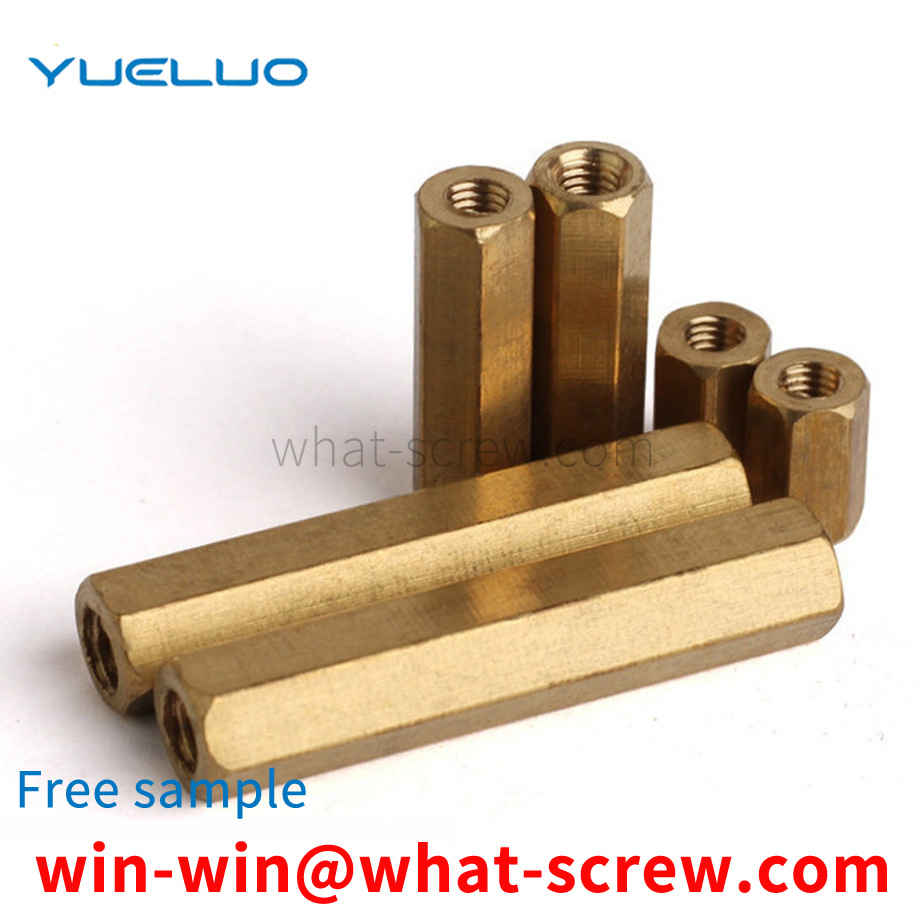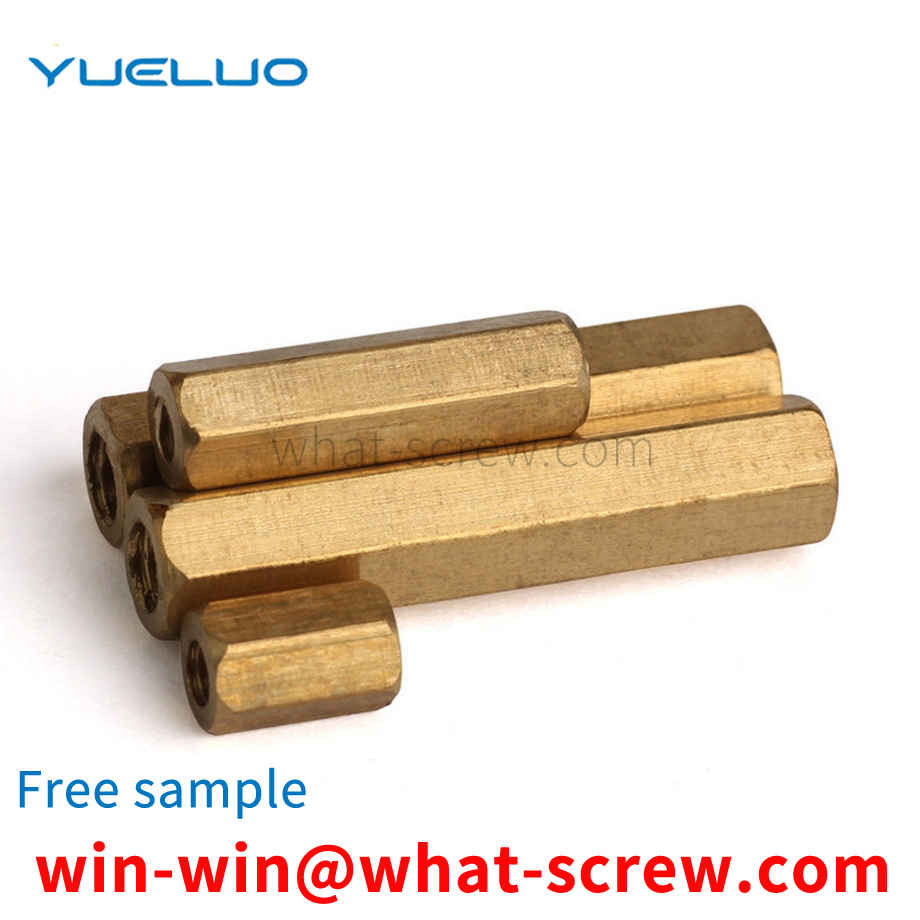The Greek mathematician Arkutas once described the principle of screw, screw, screw. In the first century AD, the Mediterranean world had begun to use wood screws, screws, and screws in screw presses that could press olive oil from olives, or make wine from grapes. Before the fifteenth century, metal screws, screws, screws were rarely used as fasteners in Europe. Rybczynski (Rybczynski) proves that hand-held screwdrivers and screwdrivers existed in the Middle Ages (at the latest AD 1580), but it was not until the eighteenth century that threaded fasteners were commercialized and began to be widely used. . Before threaded fasteners were widely used, there were many different ways of tightening. Mostly related to woodworking and forging, and less to machining, concepts such as dowels and pins, wedges, tenon and tenon, dovetails, nails, forge welding, and others are tied with leather or fiber and tied together. Before the mid-nineteenth century, ships were built with cotter pins, pin bolts, or rivets. There were also adhesives, but not as many as they are here today. Metal screws, screws, and screws became commonly used fasteners after the use of machine tools in the 18th century to mass-produce screws, screws, and screws. This technology developed around the 1760s and 1770s, along two separate processes. Approaches, but quickly converged: wood screws, screws, screws (metal screws for wood fixing, screws, screws) are machined with single-purpose, high-yield machines, and low-volume, mold shop style production V-Thread Machine Screws, Screws, Screws, can choose from a variety of different pitches.
In view of the above situation, the technical problem to be solved by Guangdong Yueluo Hardware Industry Co., Ltd. is to provide a self-expanding semi-solid installation rivet, the purpose is to solve the existing connection between plastic shells, lightweight plates, insulating materials, circuit boards, or any other In the case of thin, light-weight materials, the grip and bonding force of the rivet itself on the mounting surface is weaker than that of the rivets that are screwed and installed by manual operation. The rivet structure needs to be improved and strengthened when the material is installed.
The cylindrical pin magnetic positioning automatic press-in mechanism includes a base, a guide block is arranged on the base, one end of the guide block is provided with a guide vertical plate, and a push-up column is arranged under the end, and the push-up column is connected with a driving mechanism to drive The mechanism is arranged inside the guide vertical plate; one side of the guide block is provided with a push plate, the end of the push plate is provided with a semicircular groove, the push plate is connected to the driving mechanism, and the driving mechanism is arranged on the base The other side of the guide block is provided with a workbench located on the base, an error-proof positioning mechanism is arranged above the workbench, a press-in mechanism is arranged above the error-proof positioning mechanism, and one side of the error-proof positioning mechanism is provided. There is an error-proof detection mechanism; the press-in mechanism includes a punch, a punch block and an upper template arranged in sequence from bottom to top, and the upper template is driven and connected with five driving mechanisms; the error-proof detection mechanism includes a fixed angle plate, a fixed angle The plate is arranged on the worktable, and the fixed angle plate is provided with a four-drive mechanism, and the four-drive mechanism is connected to the detection head.
Standard parts are commonly used parts, which are widely used in various mechanical structures. Among them, the T-track bolt is a common standard part. The existing T-shaped track bolts, especially those used in high-speed railways, are often installed in pre-buried tracks, and the T-shaped track bolts are not easy to install, which may easily cause positional deviation.
The fixing screw proposed by Guangdong Yueluo Hardware Industry Co., Ltd. has a screw body 1, and the axial surface of the screw body 1 is formed with extending screw teeth 6, and the axial surface is a column along the central axis direction of the cylinder of the screw body 1. The body surface has a hemispherical screw tail 7 at the bottom, and a screw head 2 at the top. The upper surface of the screw head 2 is provided with a slot (not shown). The screw body 1 is composed of the upper tapered rod 4 and the lower cylindrical screw 5. The tapered rod 4 is an inverted cone, the diameter of its circular upper surface and the diameter of the screw mounting hole 10. equal. The fixing screw also has a washer 3, the washer 3 is arranged between the screw head 2 and the screw body 1, the lower surface of the cylindrical washer 3 has a number of teeth 8, the teeth 8 are along the The upper surface of the inverted cone of the tapered rod 4 and the edge of the washer 3 are connected to form a straight convex strip 15 extending outward; the convex strip 15 can also be designed in an arc shape. The fixing screws for installation proposed by Guangdong Yueluo Hardware Industry Co., Ltd. can be made of metal materials in one piece. As shown in Figure 3, it is a schematic diagram of the installation of Guangdong Yueluo Hardware Industry Co., Ltd. for PCB board fixing. When installing, first pass the screw body 1 of the fixing screw through the mounting hole 10 and the copper column 11 provided on the PCB board 9, so that the tail 7 of the screw reaches the mounting hole 13 on the casing 12, and then use the tightening tool 14 to insert the screw At the notch on the top of the head, forcefully press the inverted cone design taper rod 4 of the screw body 1 into the mounting hole 10, so that the tail 7 passes through the mounting hole 13. Due to the outer diameter D at the bottom of the taper rod and the screw mounting hole The aperture size of 10 is equal, and the fixing screws are pressed and fixed, so that the PCB board 9 can be automatically corrected in the process of fixing its front, back, left and right deflections, and the accuracy of the installation position of the PCB board 9 can be ensured. As shown in Figure 4, after the fixing screw is screwed into the casing, the washer 3 is fully contacted and pressed on the PCB board 9, and the PCB board 9, the copper column 11 and the casing 12 are firmly connected together without sliding. . The teeth 8 on the washer 3 are in full contact with the surface of the PCB board 9, so that a ground wire path is set up between the PCB board 9 and the casing 13 by the metal fixing screw 1, thereby ensuring that the PCB board 9 is fully grounded , the design of the teeth 10 on the washer 3 also has a non-slip function. The fixing screws for installation designed by Guangdong Yueluo Hardware Industry Co., Ltd. make use of the cooperation, friction and electrical conductivity in the mechanical connection, which fully guarantees the firm installation of the PCB board and the chassis and the good grounding of the PCB board. Moreover, the ellipsoid tail of the fixing screw The surface is relatively smooth, even if the mounting holes are exposed, it will not cause scratches on the hands and desktop. The above is only the embodiment of Guangdong Yueluo Hardware Industry Co., Ltd., and does not limit the scope of Guangdong Yueluo Hardware Industry Co., Ltd., any equivalent structure made by using the contents of the description and drawings of Guangdong Yueluo Hardware Industry Co., Ltd. or etc. Effective process transformation, or direct or indirect application in other related technical fields, are also included in the protection scope of Guangdong Yueluo Hardware Industry Co., Ltd.
We have many years of experience in the production and sales of screws, nuts, flat washers, etc. The main products are: left-handed bolts, thickened slotted nuts, Torx countersunk head screws, USS enlarged washer and other products, we can provide you with suitable products for you. Fastener Solutions.



















 Service Hotline
Service Hotline




